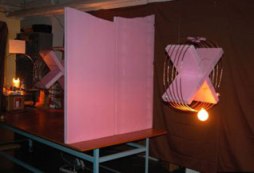Electricity without wires. Toward a New World of Wireless Electricity
 At the end of the 19th century, the discovery that electricity could be used to make a light bulb glow caused an explosion in research aimed at finding the best way to transmit electricity.
At the end of the 19th century, the discovery that electricity could be used to make a light bulb glow caused an explosion in research aimed at finding the best way to transmit electricity.
At the head of the race was the famous physicist and inventor Nikola Tesla, who developed a grandiose project. Unable to believe in the reality of creating a colossal network of wires covering all cities, streets, buildings and rooms, Tesla came to the conclusion that the only feasible transmission method is wireless. He designed a tower approximately 57 meters high, which was supposed to transmit energy over a distance of many kilometers, and even began to build it on Long Island. A series of experiments was carried out, but the lack of money did not allow the completion of the tower. The idea of transmitting energy by air was scattered as soon as it turned out that industry was able to develop and implement a wired infrastructure.
And now, a few years ago, associate professor of the Department of Physics at the Massachusetts Institute of Technology (MIT), Marin Soljačić, was awakened from a sweet sleep by the insistent cries of a mobile phone. “The phone didn’t stop, demanding that I set it to charge,” says Soljacic. Tired and not about to get up, he began to dream that the phone, being at home, begin to charge on its own ...
An example of simple but effective lighting control
 This example is the answer to those who think that automation is something complicated and terribly expensive. A socket with a built-in motion and light sensor for $ 25 will allow you to comfortably enter the garage, pantry and other office space. And you do not have to worry about turning it on or off. The result is ease of use and energy savings.
This example is the answer to those who think that automation is something complicated and terribly expensive. A socket with a built-in motion and light sensor for $ 25 will allow you to comfortably enter the garage, pantry and other office space. And you do not have to worry about turning it on or off. The result is ease of use and energy savings.
This device allows you to change the level of illumination at which the light will turn on, the viewing angle of the motion sensor (you can get a maximum of 360 degrees) and the duration of the on (from 5 to 100 seconds). The socket is compatible with incandescent lamps up to 60 watts, and also supports economical 20-watt bulbs.
